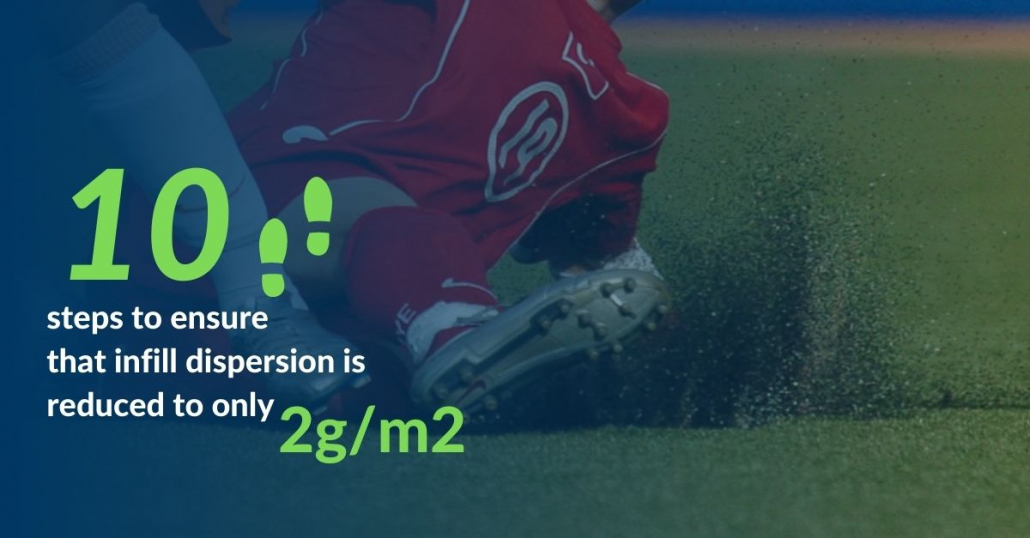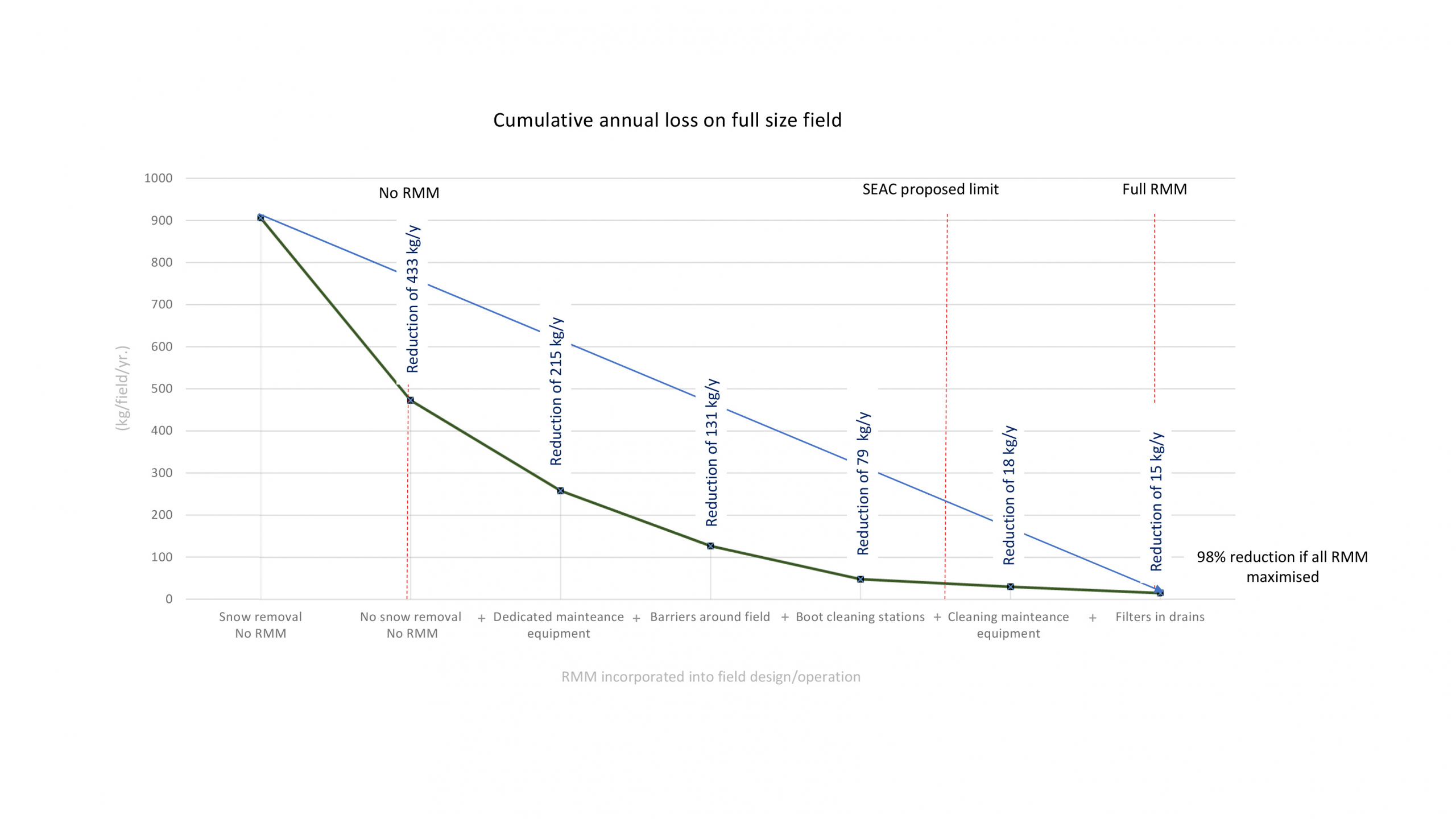The European Chemical Agency (ECHA) has requested its Risk Assessment Committee (RAC) to prepare a supplementary opinion on the restriction dossier on intentionally added microplastics with regards to polymeric infill used in third-generation synthetic turf fields. We would like to share some background and context as to why this request was made.
Since the delivery of RAC’s opinion in June 2020, new research and information has emerged that show that infill dispersion can be reduced to as little as 2g/m2. This is well below the 7g/m2 threshold that had been proposed by RAC’s sister committee, the Socio-Economic Analysis Committee (SEAC). ECHA is now granting RAC the opportunity to revise its opinion on this new information that was submitted during the 60-day external consultation of the SEAC opinion.
Key to the new information is the study by independent Swedish environmental consultancy company Ecoloop, as well as the latest technical report by the European Standards Committee (CEN). Both documents received significant input from ESTC and ESTC members.
Ecoloop views a synthetic turf field as a controlled environment and has calculated that infill migration can be prevented by up to 97% when implementing measures proposed in the CEN Technical Report 17519 (Surfaces for sports areas – Synthetic turf sports facilities – Guidance on how to minimize infill dispersion into the Environment).
The 10 steps we need to embrace
ESTC has defined ten steps to control the movement of infill:
- Select turf systems with low splash ratings;
- Fit all fields with physical barriers to retain the infill within the footprint of the field;
- Install catchment grates at all entrances to a field;
- Provide boot-cleaning stations at the main player entrance to a field;
- Add a filter bucket offering primary filtration (removing the heavier silt) and a secondary fine micro-filter that captures any remaining small particles to all groundwater drainage in the vicinity of a field, a zone that needs to be controlled;
- Provide paved snow storage areas (with suitable drainage) for fields in regions where heavy snowfall is anticipated;
- Use dedicated maintenance equipment stored at the field;
- Clean any machine or equipment that leaves the field, inside the field perimeter;
- Adhere to good practices when installing a synthetic turf field;
- Lift, wrap and recycle end-of-life synthetic turf;
Download the poster ‘Synthetic turf infill control’
How much will each step achieve?
When all 10 steps are implemented, infill dispersion can be reduced by 97% to approximately 2g/m2. The table below shows how the various Risk Management Measures (RMMs) can each contribute to this result:
Sports governing bodies like FIFA, World Rugby, FIH, Rugby Football League and the Gaelic Athletics Association have already adopted the recommendations from CEN TR17519 and have incorporated these into their guidance/requirements documentation.
As the RAC opinion lacked evidence to conclude whether Risk Management Measures capable of achieving the stated minimum effectiveness of annual losses of <7g/m2 actually existed, ECHA has now asked RAC to conclude whether the Ecoloop study by Magnusson & Mácsik indicates that an appropriate combination of RMM can reduce infill releases into the environment to 2g/m2.
In addition, in its final opinion, RAC expressed concerns about the practicality and enforceability of RMM in the absence of appropriate international/European standards, or guidance indicating which RMM should be used, and how, in order to curb releases. ECHA now asks RAC to conclude whether the publication of CEN TR 17519 addresses this concern.
It is against this background that ECHA decided to formally consult RAC on the new information which ESTC helped to generate, and to invite the Risk Assessment Committee to supplement their opinion before ECHA shares its final draft commission proposal to the EU.

